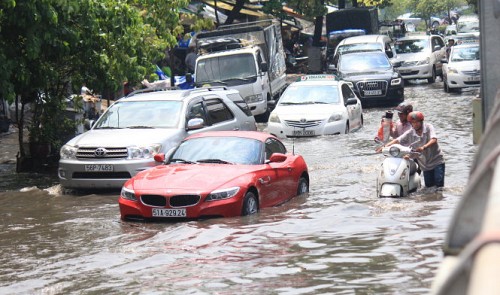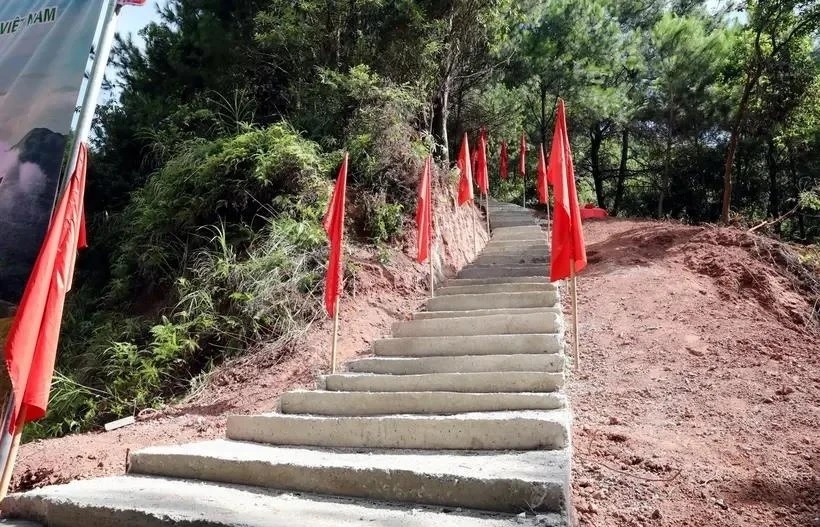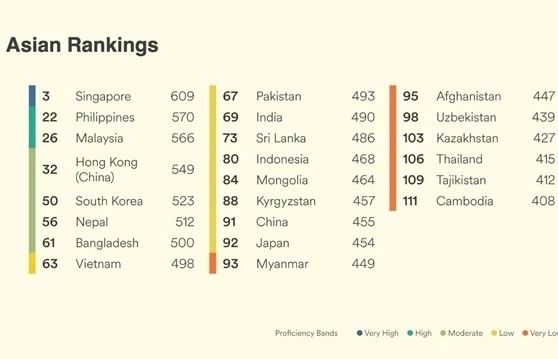Private firm designs $438mn anti-flooding project for Ho Chi Minh City

After considering the project, the municipal People’s Committee has proposed that the People’s Council approve it, Thoi Bao Kinh Te Sai Gon Online (Saigon Economic Times Online) said.
The project was developed by Trung Nam Construction Investment Corporation, a private firm in Ho Chi Minh City.
It is meant to prevent floods caused by high tides in an area of 570km², including the central area of the city and the right side of the Saigon River.
Under the project, six tidal control works would be built in the Ben Nghe, Tan Thuan, Phu Xuan, Muong Chuoi, Cay Kho, and Phu Dinh areas that are located on the banks of the Saigon River.
In addition, a 7-km long embankment system and 68 small sewers underneath it would also be constructed alongside the river.
These constructions are expected to be located in District 1, District 4, District 7, District 8, Nha Be District, Binh TanDistrict, and Binh Chanh District.
The large project is thought to benefit around 6.5 million inhabitants in the city of over eight million.
If approved, the project will be initiated in the BT (Build-Transfer) form within this year and is expected to be completed in 2018.
Site clearance is scheduled for completion in the fourth quarter of 2016 at a total cost of around VND1.79 trillion ($79.6 million), according to Trung Nam Construction Investment Corporation.
Over the past ten years, city officials have invested about VND29 trillion ($1.3 billion) in anti-flooding projects, according to news websiteVnExpress.
At a meeting organized in Ho Chi Minh City on September 29 to seek solutions for curbing inundation, Taiwanese Professor Tsai I Chang pointed out that the city’s population has increased by five times since 1975, which causes wastewater volumes to rise correspondingly.
But the sewerage system has not been improved or reformed properly to meet the increasing need for water drainage.
Prof. Tsai also blamed the chronic flooding on loose urban management, random canal leveling, and fast urbanization.
He highly appreciated the city’s two anti-flooding plans, including Plan 752 (using sewers to drain rainwater) and Plan 1547 (preventing floods with embankments and tide control works).
However, due to the impacts of climate change, the two plans should be modified and supplemented to fit actual conditions, he suggested.
What the stars mean:
★ Poor ★ ★ Promising ★★★ Good ★★★★ Very good ★★★★★ Exceptional
Latest News
More News
- Adult vaccination and shingles prevention in Vietnam (November 22, 2024 | 19:52)
- Hanoi strengthens measures to prevent mismanagement and wastage of public assets (November 21, 2024 | 17:42)
- First international summit on shingles prevention held in Vietnam (November 18, 2024 | 10:00)
- Global education to improve quality of workforce (November 17, 2024 | 08:53)
- “Run for zero violence against women and girls in Vietnam” gets set (November 16, 2024 | 09:39)
- VSF empowers communities through micro-credentials (November 16, 2024 | 09:00)
- Final round of admin reform competition to take place in Hanoi (November 14, 2024 | 12:16)
- Hanoi pilots electronic health record solution (November 10, 2024 | 12:25)
- Vietnamese consumer sentiment outperforms regional averages (November 08, 2024 | 18:00)
- Japfa Vietnam serves nutrition to 1,500 children to year-end (November 06, 2024 | 16:32)
















 Mobile Version
Mobile Version